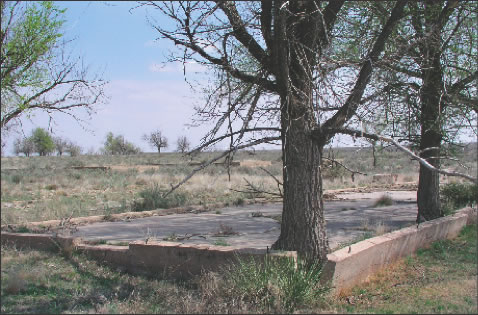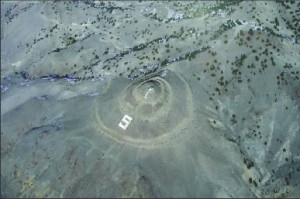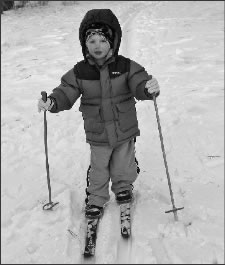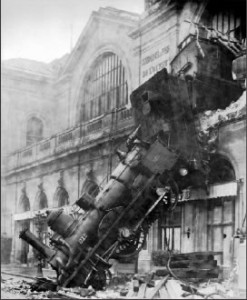By Kenneth Jessen
They had committed no crime, yet 110,000 of them were forced by President Franklin D. Roosevelt to leave their West Coast homes and move to concentration camps scattered throughout the West, including Colorado. There they would remain, held behind barbed wire, treated like criminals, and guarded by military police. They were singled out because of their physical characteristics, as well as their ancestry with America’s new enemy, the Japanese. One of the smallest of these camps was located in southeastern Colorado, officially called the Granada Relocation Center and locally known as Camp Amache.
The internment situation, now regarded as misdirected, began when Japan bombed Pearl Harbor on December 7, 1941 and the United States declared war on Japan. The FBI immediately began rounding up what it considered dangerous enemy aliens, including firstgeneration Japanese immigrants. Most lived in California and were typically farmers or merchants. Despite these suspicions, not one single case of sabotage or espionage was ever discovered, much less proven.
Based more on perceived fear than on any real threat, General J. L. DeWitt, commander of the West coast Defense Command, proposed a mass uprooting of all JapaneseAmericans. Their loyalty to the United States would be demonstrated by their willingness to go to a relocation camp.

United States Executive Order 9066 was a presidential executive order issued during World War II by U.S. President Franklin D. Roosevelt on February 19, 1942, using his authority as Commander-in-Chief to exercise war powers to send ethnic groups thought to be “potentially threatening” to internment camps. The second phase was the creation of the War Relocation Authority placed under the command of Milton Eisenhower. Eisenhower, however, had second thoughts about this forcible relocation of U.S. citizens and wrote a letter which stated that he felt that when the war was over, Americans were going to regret the “…avoidable injustices that may have been done.” Sticking to his moral convictions, Eisenhower resigned and was replaced by Dillon S. Myer.
The order led to the Japanese American internment in which some 120,000 ethnic Japanese people were held in internment camps for the duration of the war. Of the Japanese interned, 62 percent were Nisei (American-born, second-generation Japanese American) or Sansei (third-generation Japanese American) and the rest were Issei (Japanese immigrants and resident aliens, first-generation Japanese American).
When the relocation plan was put into effect, soldiers were dispatched into JapaneseAmerican neighborhoods to post signs defining the date of the evacuation. Most were given only a week to prepare for removal and an uncertain fate. They were allowed to take only what they could carry. Forced to sell their furniture, cars, land, and businesses, they received only a fraction of what they were worth.
Located in Prowers County, the Granada Relocation Center in Colorado was southwest of Granada and sat on more than 10,000 acres of desolate sagebrush-covered prairie, void of water. Since the Cheyenne Indians originally occupied this part of Colorado, it was suggested that the place be named for a Cheyenne Chief’s daughter and wife of John Prowers, Amache.
The first Japanese American evacuees arrived to help construct their own prison. This was followed by train after train arriving in Granada until Amache’s population rose to 4,492 in just two weeks. The trains often pulled in at night causing confusion among the new arrivals who were trying to get situated. Not all of the twenty nine blocks of identical barracks had hot water during the first few weeks. Poor construction allowed blowing dust to infiltrate the rooms. The situation became worse during the winter when snow replaced the dust. This ugly, barren, treeless land was in stark contrast to the lush coastal areas of California, home of most of the evacuees. The population was held in check by military police that controlled access to the camp. It was basically run like a penitentiary. Amache’s peak population eventually reached 7,567 in October 1942. continued
In 1945, when the order was given to release the JapaneseAmericans not one left Amache on the first day. Many had nothing to return to and all their property, except for their personal possessions, was gone. The greatest number returned to California to try to rebuild their lives. After the camp closed in January 1946, approximately 2,000 of the Japanese-Americans remained in Colorado.
The ironic part of all of this is that during the interment, many parents were waving goodbye to their sons through the barbed wire fence because these young men were being drafted to serve in the U.S. military. The war in Italy was fought by the 442nd Battalion consisting of second-generation Japanese Americans, and this was the most decorated U.S. battalion during World War II.
Colorado’s then-Governor, Ralph L. Carr, spoke out on behalf of the persecuted Japanese Americans by saying, “They are loyal Americans sharing only race with the enemy.” He was the only United States governor to welcome them and invited them to make Colorado their permanent home. In appreciation, a bust of Governor Carr was erected at Denver’s Sakura Square by Colorado’s Japanese Americans.
Recently a teacher at the Granada High School, John Hopper, discovered prejudice against those of Japanese ancestry among local residents. They told Hopper that it was not a “concentration” camp but rather a “relocation” camp as its official name implied. Hopper turned his attention to his students and takes on about a dozen to study the camp’s history. The students give tours to visitors, and they also maintain the cemetery. They constructed a scale model of the camp that is housed in the museum located in Granada. The students give presentations on the camp’s history. They are reconstructing the small Japanese-style garden at the camp’s entrance. The students can now take a family name and provide relatives with the location within the barracks where that particular family was held.
Hopper is hoping for grant money that will allow some of the buildings to be moved back onto their foundations that will give visitors a better understanding and appreciation of the physical nature of the camp.
Hopper has not been alone. The Denver Central Optimist Club and the Amache Preservation Society have contributed to the preservation and improvement efforts. In 1994, Camp Amache was added to the National Register of Historic Places and recently, the National Park Service has gotten involved in nominating it as a National Historic Landmark. Under the direction of Kara Miyagishima, National Park Service Historian, former internees are being asked how these camps should be preserved. The stories about life in the camps are being recorded. Congress has authorized the expenditure of $38 million to the restoration and maintenance of the ten camps across the United States.
Robert Harvey in his book, Amache, writes, “And saving Amache is vital to America’s future…those that forget the past are doomed to repeat it. If the memory of Amache fades away, then the lessons learned likewise die.”
Kenneth Jessen of Loveland is the author of many books of Colorado lore, most recently The Great Western Railway.



